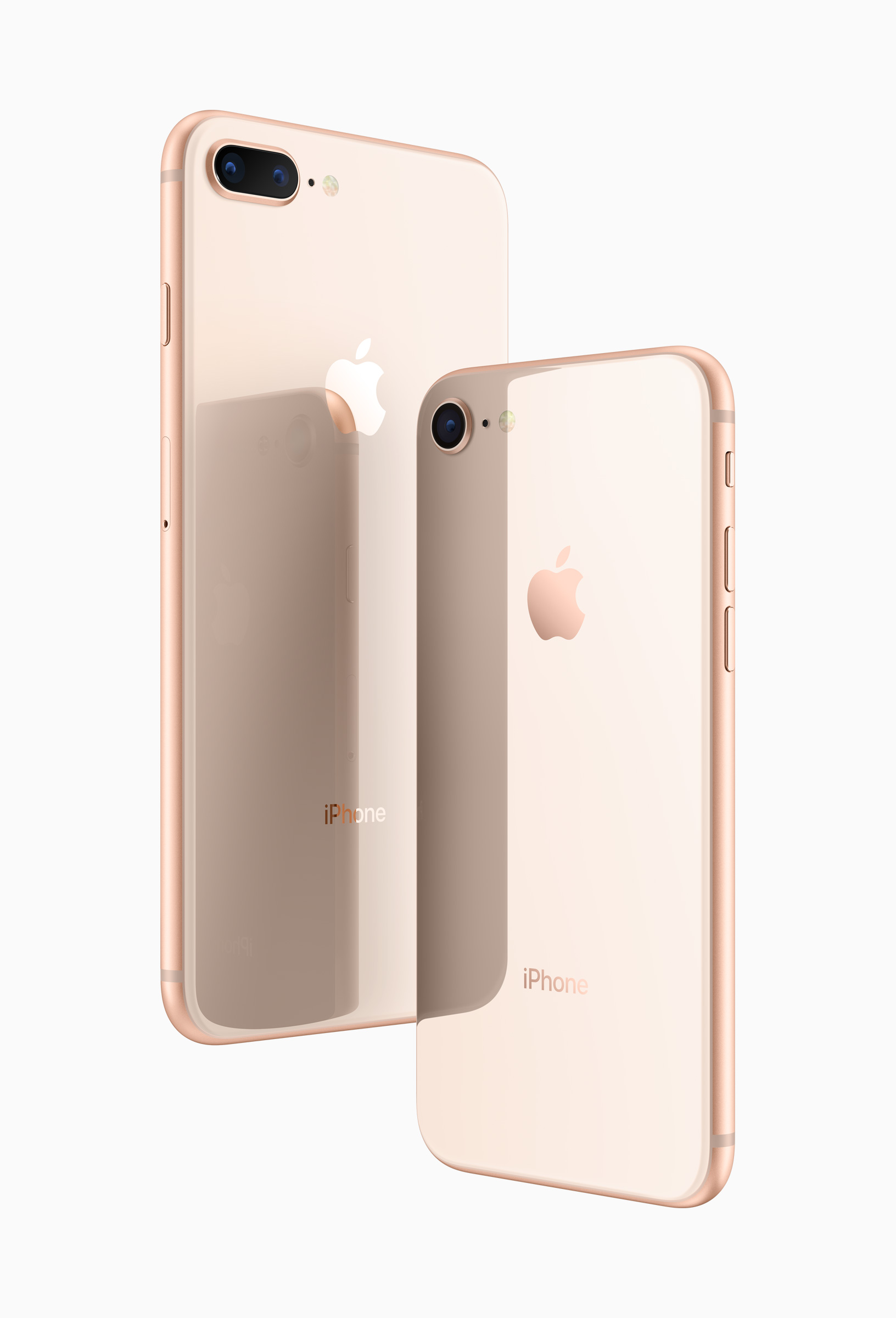In an in-depth review, DxO Mark, a leading camera and lens review site, declared that iPhone 8 Plus has the best smartphone camera that it has ever tested.
Image via Apple
Dx0 Mark gave the new iPhone 8 Plus a mobile score of 94, the highest yet that it has given any smartphone camera, including prior iPhone models, Google Pixel and HTC smartphones. Both iPhone 8 models feature a 12MP camera with a larger sensor, color filter, deeper pixels and optical image stabilization for both photos and videos.
Apple continues to improve upon its popular iPhone camera. Last year's iPhone 7 model introduced dual cameras with independent lenses. Apple consistently helps popularize emerging new technologies such as multitouch displays, accelerometer motion sensors, gyroscopes and depth-sensing cameras that are often developed elsewhere first, but Apple refines and targets for useful, real-world applications prior to launch. In fact, one of the earliest researchers of multi-touch sensing, Jeff Han, known for helping create large conference room screens that Microsoft bought and relabeled as Surface Hub, was thrilled when Apple launched the first iPhone in 2007. Han said, "iPhone is absolutely gorgeous, and I've always said, if there ever were a company to bring this kind of technology to the consumer market, it's Apple."
Through these beautiful cameras, Apple also helps educate users on concepts like distance-aware imaging, color range and how to take great portraits, in addition to how everyone communicates or takes photos or videos. Here's some pro tips from Apple for everyday use.
iPhone Color Gamut via Apple
Some of the key differentiators include:
better capture of HDR scenes with more detail preservation and overall exposure
strong performance in low light scenarios and with flash, recognizing and exposing faces properly even in dimly lit, indoor environments
portrait photography
zoom capabilities with a dedicated telephoto camera lens
bokeh for effective depth effects, more blur effects like a typical optical blur with more natural lighting
more accurate exposures
more accurate contrast
pleasing, brilliant color for both outdoors and indoors
wide color gamut
good white balance, with a slighter warmer tone via TrueTone technology for some situations for better viewing experience and presentation
dual‑domain pixels for great views of the screen from almost any angle
avoids visible color shading completely, even in low-light scenarios
remarkably accurate autofocus (though longer time to focus initially)
excellent detail capture, ideal for landscape photography
very low noise
few artifacts
flash-only photos show accurate white balance and excellent color rendering.
Comparison between iPhone 8 Plus, iPhone 8 and Google Pixel in outdoor photography with a single subject
iPhone 8 Plus Image Capture via DxO Mark
iPhone 8 Image Capture via DxO Mark
Google Pixel Image Capture via DxO Mark
Foreground Detail Capture and Accurate Color in Landscape Photographs
iPhone 8 Capture via DxO Mark
Accurate Color Capture
iPhone 8 Capture via DxO Mark
Accurate Optical Zoom with Rich Color
The wide‑angle and telephoto lenses available on the iPhone 8 Plus enable optical zoom, with a digital zoom of up to 10x for photos and 6x for videos.
Image via Apple
Portrait Mode Offers Range of Photo Options
Showcased earlier at WWDC, the new Portrait Mode available on both the iPhone 8 and iPhone 8 Plus models makes taking portrait photos better and easier to shoot with sharper foregrounds, naturally blurred backgrounds. With dual cameras and new facial landmarking tools, both iPhone 8 models make it easy to create dramatic studio lighting effects.
Both iPhone 8 and iPhone 8 Plus benefit from the new processing power of the A11 Bionic chip. You can capture an image and create a lighting effect in the foreground in addition to the background bokeh effect. This creates the effect of a light bounce, offering highlights for the face of your subject and options to dramatically light the jawline or even completely black out the background similar to the clean, crisp shooting of studio photography on a stage.
Image via Apple
Image via Apple
Image via Apple
Image via Apple
Image via Apple
Professional Photography with Rich Color and Detail Shot on an iPhone
Taking intimate, powerful photographs with the iPhone has grown increasingly popular as Apple has improved and refined iPhone cameras over the years.
Apple and TBWA\Media Arts Lab 'Shot on iPhone 6' campaign 2016.
Apple and TBWA\Media Arts Lab 'Shot on iPhone 6' series in 2016.
This is evident in TIME magazine's 2017 photo shoot using only iPhones. TIME director Kira Pollack hired Brazilian photographer Luisa Dörr to shoot portraits of women for magazine covers for their upcoming "Firsts: Women Who Are Changing The World," documentary magazine series and book. Dörr's bare-bones approach with just her iPhone and a few lighting props, was disarming, friendly and made it easier to shoot. The portrait quickly came into focus with more subtlety of expression and body movement.
Luisa Dörr, left, shoots Oprah Winfrey on her iPhone in Los Angeles, Oct. 2016. Image via TIME.
Photographer Luisa Dörr reviews a picture edit at the TIME offices with the project team (l-r): Spencer Bakalar, Diane Tsai, Luisa Dorr, Justine Simons, Tara Johnson (front center), Kira Pollack and Natalie Matutschovsky. Image via TIME.
New iPhones Benefit from Stronger Processing Power and Built-in Software
The new iPhone 8 and iPhone 8 Plus both benefit from stronger processing power via the A11 Bionic chip, new and enhanced software ability to combine multiple frames into a single image and AutoHDR technology to render high-dynamic range scenes. The A11 Bionic uses Apple's Image Signal Processing core to understand sensor data detected by the cameras. The powerful new Neural Net processing capabilities in both iPhone 8 and iPhone 8 Plus can recognize and understand faces, bodies and objects, even in motion.
Improved Video Capture Capabilities
Both iPhones also are better at capturing video though not as effective as the Google Pixel, but significantly better than prior Apple models. iPhone 8 and iPhone 8 Plus both offer better video quality and stability while panning or walking as well as face tracking for proper exposure.
Excellent Choice for Smartphone Photographers
In summary, the Apple iPhone 8 Plus is an excellent choice for a smartphone photographer with its superior image quality, optical zoom, industry-defining Portrait mode, high dynamic range, face and object recognition for optical lighting and processing power.

















